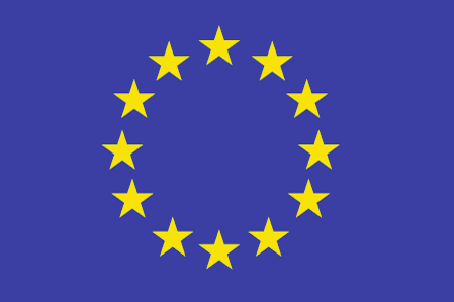Interuniversity Microelectronics Centre – IMEC
IMEC performs world-leading research in nano-electronics and nano-technology. Its staff of close to 2,000 people includes over 600 industrial residents and guest researchers. Imec’s research is applied in better healthcare, smart electronics, sustainable energy, and safer transport and focuses on the following fields:
sub-22nm CMOS Heterogeneous integration, Electronics for healthcare and life sciences, Wireless communication, Imaging systems, Organic electronics, Energy and Sensor systems for industrial applications.IMEC's research is 3 to 10 years ahead of the industry. Imec forms a bridge between the fundamental research at universities and the technology development in the industry. Imec has a unique expertise in chip processing and system design, a strong IP portfolio, an ultramodern infrastructure, and an extensive network of partners.Imec is headquartered in Leuven, Belgium.
Website
IMO-IMOMEC
IMO-IMOMEC (Institute for Materials Research in MicroElectronics) is an associated lab of IMEC (Interuniversity Microelectronics Centre, Leuven) and is housed within the premises of The Institute for Materials Research (IMO), a research centre of Hasselt University, with a vast knowledge in the field of materials science. IMO-IMOMEC has an integrated and intensive collaboration with IMO. The largest part of applied research and projects in collaboration with industry are concentrated within IMO-IMOMEC. The strongly interdisciplinary team of IMO-IMOMEC (chemists, physicists, engineers, biomedical researchers) concentrates its joint activities on wide band gap materials, organic synthesis, organic materials for electronic applications, precursors for nanomaterials, biosensors, nanophysics and electrical, physical and chemical characterisation.
IMO-IMOMEC is involved in the following technological activities:
development of new nanomaterials: functionalisation of small organic molecules, improvement of the material properties of conjugated polymers by using nanostructured conductive polymers and process optimization by parallel-synthesis, Innovative deposition techniques for nanostructured polymers, The Euregional Nanomaterials Analysis Superlab and the Lifetime study and accelerated ageing experiments on demonstrators
Website
National Hellenic Research Foundation – NHRF
The National Hellenic Research Foundation (NHRF) (www.eie.gr) is a governmental Research organization established in 1958 to promote scientific research in Exact sciences and Humanities in Greece. It consists of three Scientific Institutions (two for Exact Sciences and one for Humanities), a National Documentation Center and one Library. The team of scientists and the participating laboratory in the project (TPCI, Nanophotonics and Applications laboratory (www.nanovuv.eu)), has past and present experience in the design and construction of optical instruments through constant development (including the pulsed discharge molecular laser at 157 nm, first designed and constructed in NHRF in 1985). It is the leading European laboratory in developing technological applications and instrumentation in the VUV spectral region, including the design of VUV compatible materials and nanomaterials. It is collaborating with major European and USA companies (Arch-Olin, Infineon, Siemens, etc) providing expertise through collaborative research projects. The laboratory since 1998 is focusing its activities on nanotechnology and related applications, including the investigation of fundamental optical, electric and magnetic properties of materials at the nanoscale, gaining more than 150 man-years of experience. The current research interests (2001-2011) are focused on fundamental interactions in matter at the nanoscale level and could be embedded under the general title of: «Expression of optical, magnetic and quantum functionality of materials at the nanoscale level, driven by photons or electromagnetic fields at interphases» and include: (9) Storage of energy in molecular rotors and quantum interactions. (10) Nanothermodynamics and energy flow in mesoscopic systems and interphase layers. (11) Supramolecular physics including light driven self-assembled structures. (12) Nanomagnetism and physics of metallic nanospheres and (13) electric and transport properties of nitrides.
Website
University of Tartu – UT – Laboratory of Physics of Nanostructures / Intelligent Materials and Systems Laboratory
Laboratory of Physics of Nanostructures of Institute of Physics of University of Tartu has focused its research on nanopowders, nanoporous or nanocomposite materials, optical nanofibers, nanoparticles, carbon-based nanomaterials, nanotribology and lately also nanosafety issues. Members of laboratory take part in several EU finaced projects. The laboratory is a member of “Mesosystems - Theory and Applications Centre of Excellence” (http://fii.fi.tartu.ee/meso/), a centre of excellence awarded a long-term governmental grant in 2011. The laboratory excels in applied research and is actively transferring technologies from lab to private companies as an active collaborator of the Estonian Nanotechnology Competence Centre (ENCC) since 2004. Members of the laboratory are co-inventors of 8 active patents, some of which have been licensed to Estonian SMEs. Many Lab members have performed several public lectures and practical works in schools.

